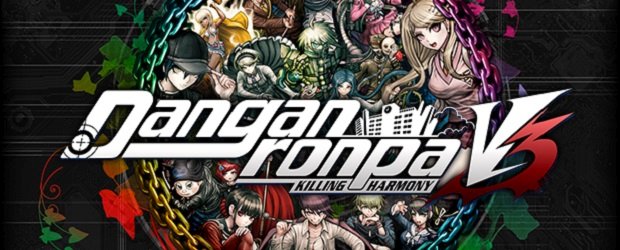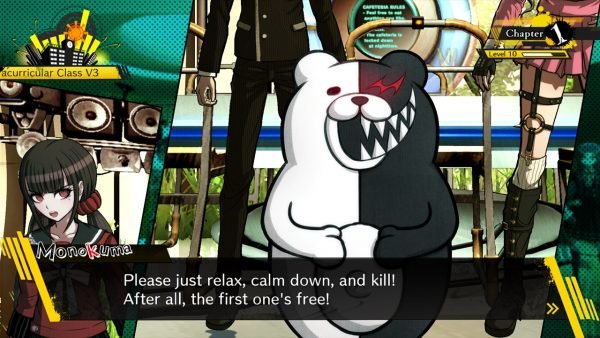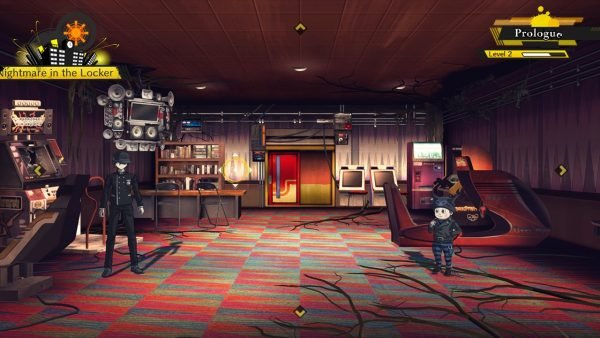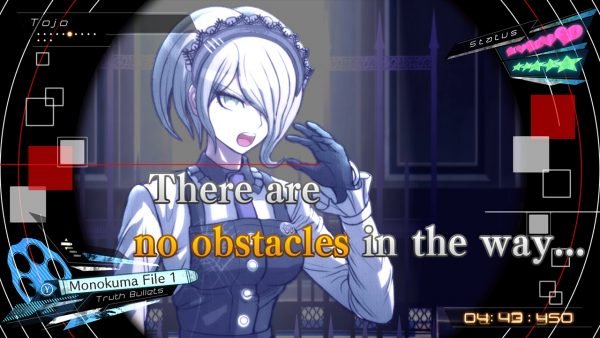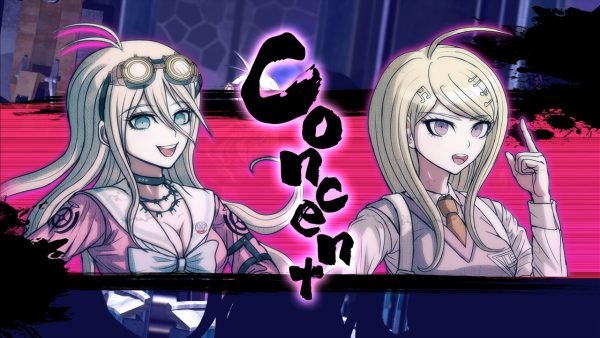Switch to: German
Coming after both the disappointing Ultra Despair Girls and Danganronpa 3, Danganronpa V3 marks a return to form for the series. It may not be the perfect sequel that people have been waiting for, but V3 is still worthwhile for fans of the series.
Danganronpa V3 starts off somewhat similarly to the previous mainline games. Waking up inside an unfamiliar classroom, Kaede Akamatsu realises that she has been kidnapped by an unknown group. After meeting up with another student, Shuichi Saihara, they are chased by large machines into the school’s gymnasium. Here they run into the Monokuma Kubs, along with series mascot Monokuma himself.
Learning that they had their memories sealed away, the group of 14 students are given memories of their “Ultimate Talents”, thus beginning the next killing game. The opening does a good job of setting up the rest of the game, showing off the various characters and the situation they are in. It doesn’t leave quite a big an impression as the opening to Danganronpa 2, but I was still excited to find out what happens next.
The Danganronpa series has always had a big focus on its diverse cast of characters and I’d say this is one of the areas V3 fails in. That’s not to say that they’re bad, but there are a lot more characters in this game that you can’t really sympathise with. Many of them can come off as annoying, making some of their inevitable deaths have less impact. It’s still enjoyable to see their interactions with each other, but it feels like the writer went a little too far trying to have the cast be as unique as possible without thinking about how players will react to them.
Thankfully these characters never get too annoying, though the same can’t be said about the story chapters midway through the game. As with Danganronpa 1 and 2, when someone is killed the survivors must investigate to find evidence on the killer. This leads to a class trial which is used unmask the killer and eliminate them from the killing game. This marks the end of the chapter, and this loop continues for the entire game.
Investigations play out similarly to previous Danganronpa games. You search each area for various clues, from items to the testimonies of other classmates. These sections are usually very linear, not allowing you to move to another area until you find every clue in the current one. This does remove the chance of missing a clue and being forced to backtrack, but investigations could have done with a few new gameplay elements to add a little variety.
Class trials are where Danganronpa V3 shows the most improvement. The UI is more dynamic, with the text box rotating or switching positions depending on who’s speaking. Like the class trials in the previous Danganronpas, during testimonies the dialogue spoken shows up on screen with certain words highlighted. To progress through the trial, you must shoot highlighted words with “truth bullets”. These are pieces of evidence collected during the investigation and information learned during the trial.
Yellow and blue words correspond to words that you disagree or agree with respectively. New to Danganronpa V3 is the ability to lie, which gives truth bullets the opposite meaning. The lie mechanic is required at certain points, but can also be used to unlock new events in each trial. These can be ignored, but are there for players who are observant enough.
Another set of new additions to V3 are panic and scrum debates. When multiple people try to talk over each other, a panic debate starts. This splits the screen into multiple parts, with each character speaking simultaneously. The solution to panic debates is usually made pretty simple, but it’s a decent change of pace from the more orderly debates.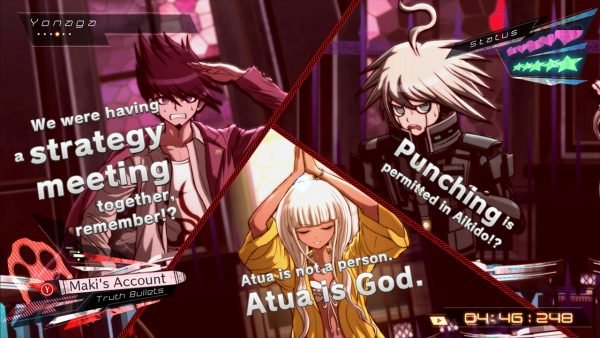
Scrum debates take place if the group can’t agree on something, causing them to take opposite sides of the argument. Here, you’re tasked with matching up various keywords to the arguments being presented by the opposing group. As with panic debates these sections aren’t too difficult, but they further help add variety to the class trials.
Something that is less welcome are the minigames that appear occasionally during the class trials. Hangman’s Gambit Ver. 3.0 is the only true returning minigame, but as the name suggests it’s been reworked again. Orbs with letters pass across the screen and are hidden by default, the player being able to cause their temporary appearance. The goal is to form a word based on the hint given to you. The reason this is version 3 of the minigame is the fact that Hangman’s Gambit has always been the most frustrating one in the series, usually requiring overly long words or sentences to be made. This latest iteration has been made far simpler, remove the annoyance but also any challenge that it could have offered.
Aside from Argument Armament, a short rhythm game that takes place near the end of each trial, the minigames are just not that good. Psyche Taxi, an old school racing minigame, takes far too long and is just used to repeat what has already been said minutes ago. Mind Mine is honestly my least favourite minigame, as it’s just Minesweeper without any skill or thinking required.
Psyche Taxi is a good example of Danganronpa V3’s main flaw: It’s generally far too easy to figure out things before the characters themselves understand what’s going on. You’ll often figure out something before the trial even starts, taking away some of the mystery during the trial itself. This is mainly a problem in the aforementioned chapters midway though V3. These trials drag on for longer than necessary, since you already know most of what happened but must wait for the cast to catch up.
These weaker chapters definitely drag the story down, but the overall narrative manages to stay engaging even during these less interesting moments. The reward for making it through these weaker cases is an exciting finale that most players will likely not see coming.
As I mentioned earlier, Danganronpa V3’s visuals are noticeable more dynamic than the last two games, especially during class trials. The podiums, characters stand on, move during trials, allowing for less static scenes. The text itself also has more variety, sometimes having animations relating to what is being said at the time. Characters sprites are a little lower resolution than I’d like though, something that is especially noticeable during close-ups that happen frequently.
The game overall runs well on the PS4, keeping a steady framerate the majority of the time. The same can’t be said of the Vita version, which can have trouble loading new characters or changing camera angles. It’s not too bad at first, but the small load times start to add up after a few hours. It’s easy to tell that the extra effects are giving the Vita a hard time compared to the generally more subdued Danganronpa 1 and 2.
Danganronpa V3’s soundtrack definitely deserves a mention, bringing back the unique sounds the series is known for. A lot of tracks are simply remixes of familiar Danganronpa themes, but there are enough new songs here to stop it from being a complete copy. The new scrum debate theme is sure to be a hit with players, even if the mechanic itself isn’t as interesting as the soundtrack playing along with it.
Conclusion
Even with a few missteps here and there, Danganronpa V3 brings enough changes to make it stand out from its predecessors. The visually dynamic trials and impactful ending are sure to leave a lasting impression on players for years to come.



